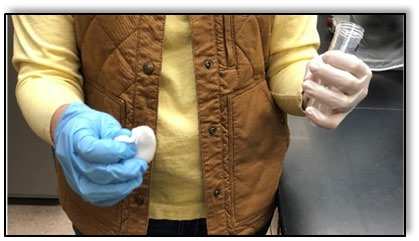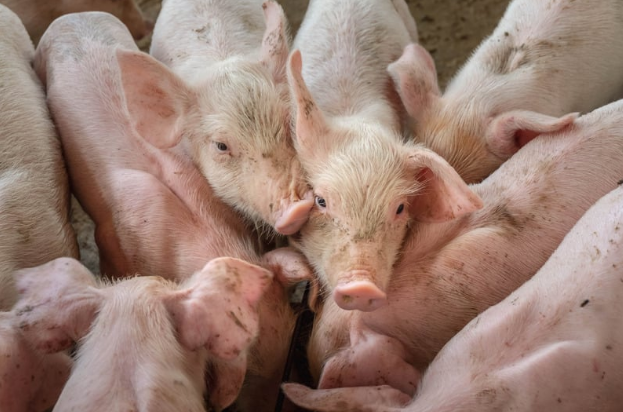Protecting our nation’s swine industry from a devastating disease

African Swine Fever is a deadly disease caused by a virus (ASFv) that can infect domestic and wild pigs. It is usually fatal and there are no treatments or vaccines available in the United States. Further, the global spread of ASFv in recent years, including our near neighbor the Dominican Republic, poses a tremendous risk to U.S. swine, pork industry, and food supply, as well as to associated agricultural industries and trade.
This project that examined methods to detect environmental contamination with ASFv was supported by the U.S. Department of Homeland Security Science and Technology Directorate Office of University Programs through the Cross-Border Threat Screening and Supply Chain Defense, CBTS, a DHS Center of Excellence within Texas A&M AgriLife Research. The lead scientist and principal investigator, Dr. Jordan Gebhardt, is a swine researcher in the College of Veterinary Medicine at Kansas State University in Manhattan, Kansas.
The methodology developed by Dr. Gebhardt and his team focused on practical application of techniques in the field, facilitating rapid response while minimizing the need for specialized equipment to collect appropriate sample types. Dr. Gebhardt stressed the importance of the work when he said, “this virus would be lethal to our domestic swine herd and would immediately shut off our export of pork products to other countries, so keeping the virus out is very important.”
Detecting the virus and preventing entry into the U.S.
The objective of this work was to develop and validate sampling methods for ASFv on various surfaces, representative of surfaces on which the virus could potentially cross our borders to threaten agricultural systems. Previous research has demonstrated that ASFv can be spread by movements of live animals, animal products such as meat, and a wide variety of surfaces that may have come in contact with the virus such as shipping containers, vehicles, and even on personnel. This work could help prevent entry of ASFv, and if it does enter, the techniques could be used to rapidly detect the virus and allow implementation of additional biosecurity control measures to stop the spread.
Practical results to address real world threats
The work provided recommendations for best practices for environmental sampling based on sound science and is being communicated widely in order to reach stakeholders at all levels (e.g., Federal and State Animal Health Officials, veterinarians and local farms who would all be involved in an ASFv response). These methods will assist in accurate determination of risk, and validation of decontamination procedures for a variety of surfaces. The ability to identify contaminated surfaces to enact additional biosecurity measures is a tremendous asset to combat the risk of ASFv iintroduction.
“Such validated methods are a critical tool to be used by the Department of Homeland Security to assess risk and identify potential biosecurity gaps that pose a threat to our swine industry and national security” said Heather Manley Lillibridge, Ph.D., executive director of CBTS. “Collaborations with the best researchers across the country enable our Center to deliver real solutions to keeping our country safe from biothreats.”
Acknowledgement: “This material is based upon work supported by the U.S. Department of Homeland Security through the Cross-Border Threat Screening and Supply Chain Defense under Grant Award Number 18STCBT00001.
Disclaimer: “The views and conclusions contained in this document are those of the authors and should not be interpreted as necessarily representing the official policies, either expressed or implied, of the U.S. Department of Homeland Security.”

